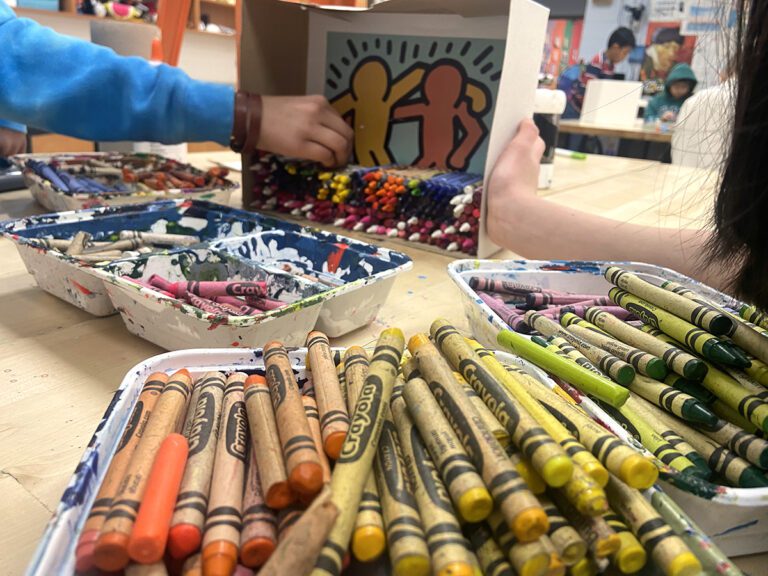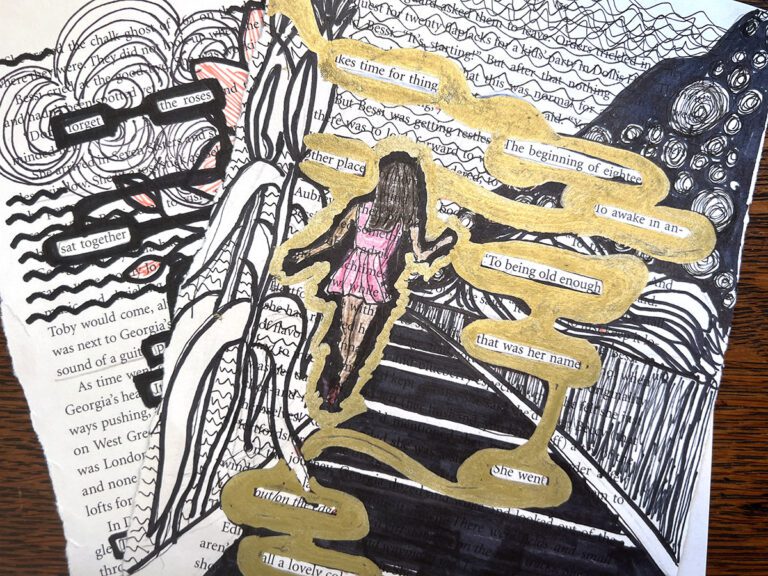Our job as educators is to prepare our students for life after school. However, the rapid development of technology means that we have no idea what the future will look like, only that change will be a constant.
The Partnership for 21st Century Learning writes “Learning and innovation skills increasingly are being recognized as the skills that separate students who are prepared for increasingly complex life and work environments in the 21st century, and those who are not.”
Art education has a crucial role to play in developing these skills, but we need to first examine the way we teach and adapt our pedagogy to fit the needs of our students.
Often, in art class, the creative tasks that students engage in are unnecessarily close-ended. Teaching creativity involves directly teaching idea generation, planning for work, and problem-solving. To really learn these things kids have to apply them by being expected to ask the question “What do I want to make?” and being tasked with figuring out the answer.
I teach this in my classroom with a process called Design Process Thinking which I’ve developed. It’s the structure for every lesson I teach. In the beginning stages of a course, I provide a fair amount of direction and support while students learn and apply specific strategies. Each strategy learned becomes a tool that students are expected to apply with increasing independence.

Here’s how each part of the process plays out in the classroom:
Inspiration
Students learn about themes, media, processes, and personal experiences as possible starting points for ideas. As learners become more comfortable with searching for ideas, they learn how to develop guiding questions that drive self-directed work.
In Practice:

In this unit, Artists Take a Stand, students were asked to find inspiration in social issues that were personally meaningful. The group that made this tape mural found inspiration in their shared concern about climate change. I helped the idea generation process in this unit by teaching brainstorming through a group activity where students were assigned a topic and asked to generate as many ideas as they could about how to depict it visually.
Design
Too often, we get stuck at offering sketching as the main design process for developing ideas. Instead of following steps, kids need to develop the capacity to select the strategy that represents the best way to develop ideas. To teach the skills needed to bring ideas to fruition we need to differentiate by teaching additional strategies, like researching, experimenting with materials, and mind mapping.
In Practice:

As part of my Artists Solve Problems unit, I assigned a pointillism/pixel challenge. Students had to take the idea of creating art out of tiny parts but try it with non-traditional materials. The group in the photo was stuck until I suggested spray paint. They decided to plan by experimenting, so I helped them develop a list of ways to try making dots with the spray paint to get them started. After some trial and error, they figured out the best solution was to remove the base of a styrofoam cup and use the remainder of the cup as a stencil. They used this technique to create a large-scale mural on cardboard.
Creation
This phase hinges on teaching students the types of questions to ask themselves as they work.
- Is this working?
- What needs to be changed?
- Is it finished?
- Is it successful?
I scaffold towards independence by asking these questions of students and partnering with them to answer.

In Practice:
The student who made the work pictured above wanted to say something about abortion. I helped her express her views on this controversial subject through discussion and feedback as she worked. It was important to her to create artwork that showed the complexity of the issue and also that reflected her personal belief system in a way that would make the viewer think. We talked about how she could use tools like text and juxtaposition to communicate her vision.
Reflection & Presentation
This phase is used to sum up the learning that has occurred and to examine next steps. It’s a time to share and celebrate work but also to be accountable for learning. I ask students to engage in a number of activities to accomplish this: sharing work on student-created blogs, presenting, and participating in critiques.
In Practice:

Blogging is a great way to develop reflective thinking. I plan questions that ask students to examine what they’ve learned during each unit and how they feel about the artwork produced. Students post images and text to answer each question, which gives me individualized insight into what they’ve learned.
The Takeaway
We, as art educators, are the idea people in schools. The Framework for 21st Century Learning presents an opportunity and a challenge for us to highlight the value of what we do. For the future of our students and our programs, we must examine how we teach creative thinking to students. In the past, the responsibility for finding inspiration and designing work has fallen mostly on teachers. It’s time for every art class, at every level, to shift that role to students.
How do you teach creative thinking in your classroom?
How have you shifted the responsibility for finding inspiration and designing work to your students?
Magazine articles and podcasts are opinions of professional education contributors and do not necessarily represent the position of the Art of Education University (AOEU) or its academic offerings. Contributors use terms in the way they are most often talked about in the scope of their educational experiences.





